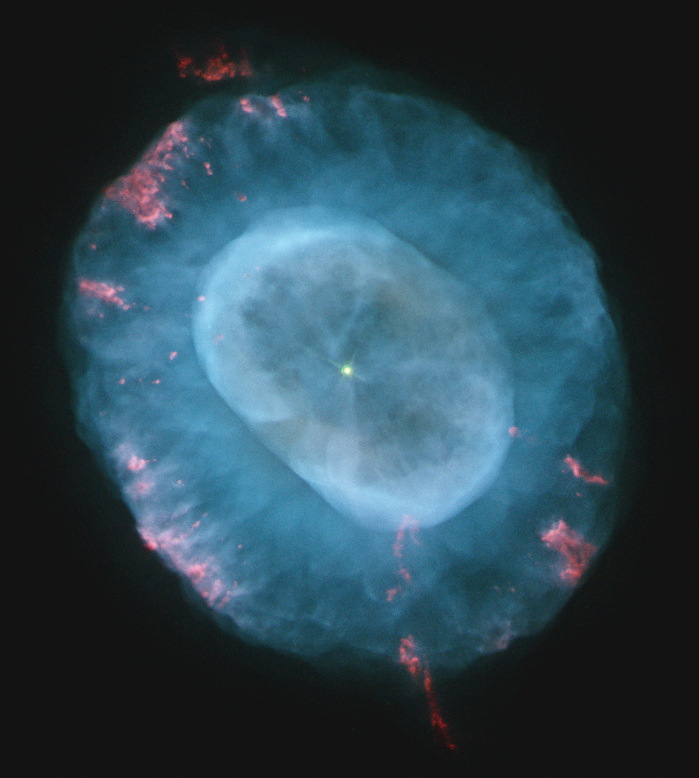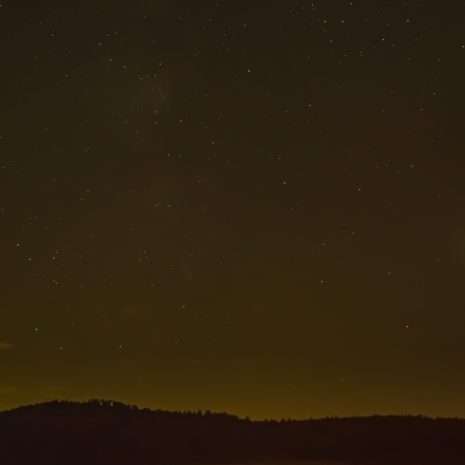Welcome to the New Year edition of Eyes on the Night Sky. If you were lucky enough to receive a telescope for Christmas, we hope you get plenty of clear skies to enjoy it.
The night sky can be quite intimidating if you are exploring it for the first time. If you are not sure how to get started in finding objects in the night sky, start with obvious objects you can see, like the Moon or planets. These objects look stunning through the eyepiece of the telescope; you will be able to see the surface features of Jupiter such as cloud bands, a few of Jupiter’s moons that appear like starry specks close to the planet, or the Great Red Spot and craters, pillars and shadows on the surface of the Moon. In fact, depending on how light polluted your area is, you have tens of thousands of celestial objects to discover and it can take a lifetime of adventure from your garden. Patience is required, as some objects can be difficult to find and our ‘great’ British weather can hamper our efforts – stargazing is an opportunistic hobby and should be viewed as a long term interest.
If you are not sure how to get started on the more difficult objects, such as nebulae you cannot see with the unaided eye, we recommend the book Turn Left at Orion. There are also many great apps you can find for your smartphone and if you phone has compass, gps and gyro sensors, they will even help you identify objects by pointing your phone at them.
Meeting other people who are interested in stargazing is a must and joining a local astronomy group is highly recommended. Not only will you meet like-minded enthusiasts, they will show you how to use your telescope and find objects. Click this text to see a list of astronomy groups.
There are plenty of monthly guides, like this one you can find out the best objects to view month-by-month – look on Youtube and do Google searches – but remember to look for guides that are UK –based as some events such as eclipses may not be seen in certain places in the world.

The constellation of Orion is well placed during the month of January, Taurus and Auriga just above it. The autumn constellation of Andromeda and Pegasus marches eastwards, with spring constellations Leo and Cancer already well placed in the east.
Feel free to download and print out the all-sky map above (credit: Dominic Ford of www.in-the-sky.org), which shows the constellations you will see in the night sky during January at 10pm. Find out where your southern horizon lies and face it, holding the map in front of you – South is at the bottom of the map. For each point of the compass, for example, the eastern sky, turn the paper so that east faces towards you (at the bottom of the page) and look up.
Without further ado, we will highlight the best objects to see in the night sky during January 2024.
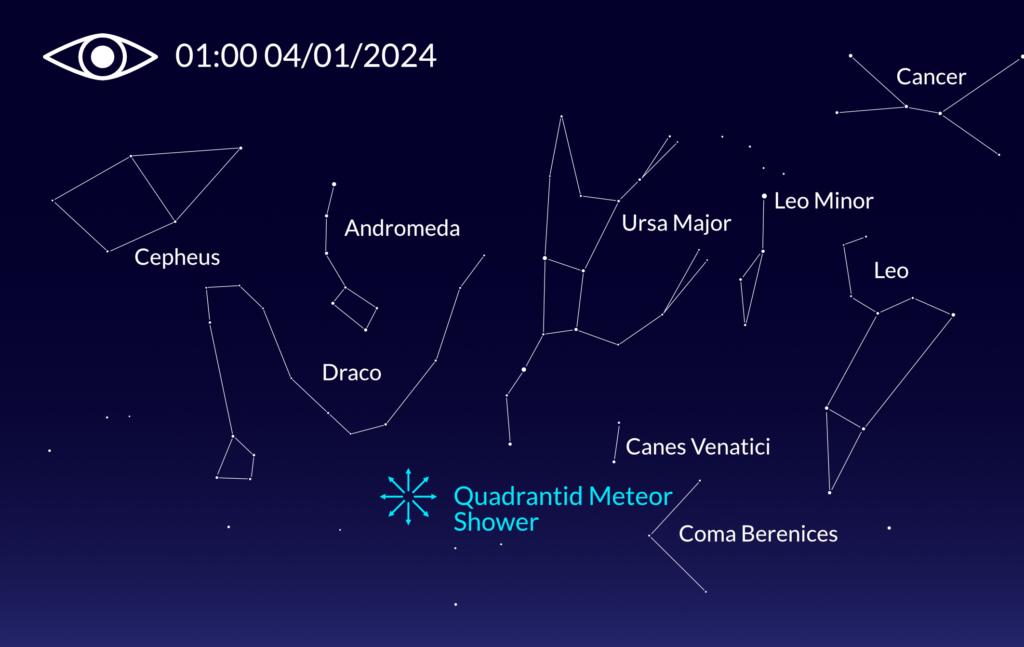
Quadrantid Meteor Shower
On the night of the 3rd and into the early hours of the 4th January, the Quadrantid Meteor shower peaks. This short-lived shower is caused by the Earth moving through the debris of asteroid 2003 EH1.
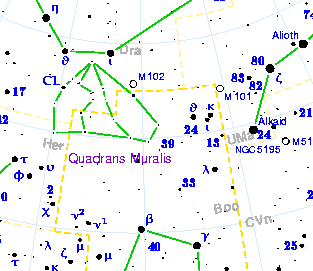
The radiant of the meteor shower emanates from the ancient constellation Quadrans, which was situated near the constellation of Draco. A quadrant was a device used to measure angles up to 90 degrees so was employed to measure the altitude above the horizon of a celestial object.
You may see plenty of shooting stars before the waning Moon (49%) rises at 12.30am – this meteor shower is thought to produce around 100 meteors per hour at the peak.
A couple of Conjunctions
On 18th January, the Moon and Jupiter will share right ascension with a separation of 2°46. In other terms, they will appear close together in the night sky as it gets dark until they set at around 1am.

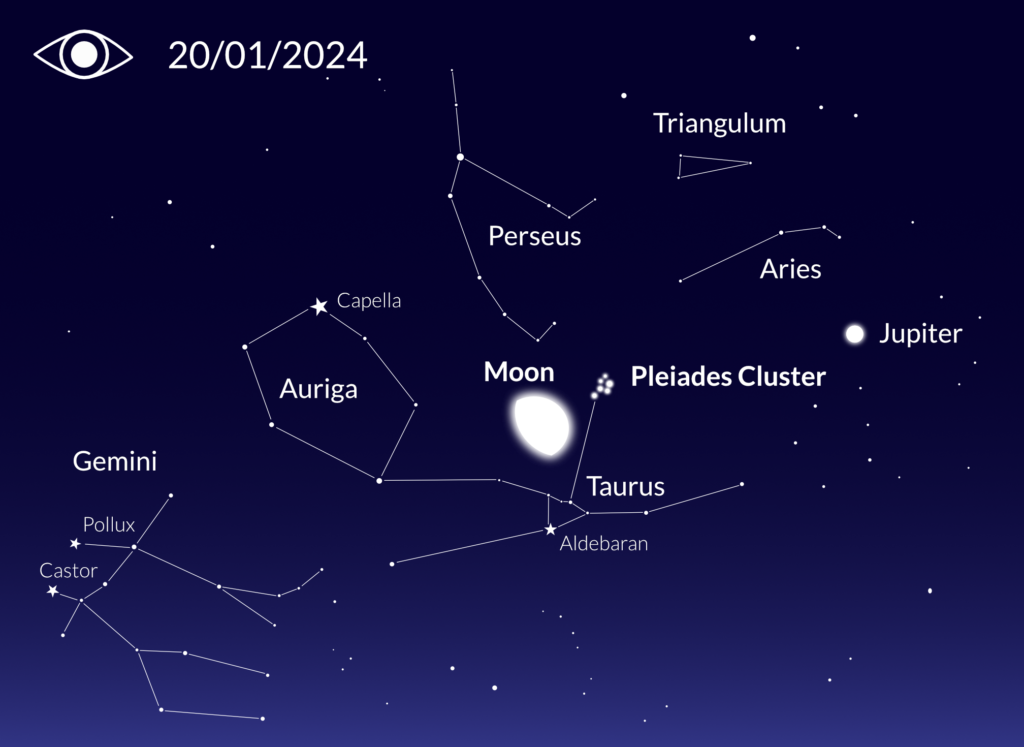
On 20th January, the Moon will pass close to the Pleiades Star Cluster. The 77% waxing gibbous Moon may wash out most of the stars in this cluster but you will see the brighter ones.
Skywatcher’s Challenge – Find a Snowball in the Sky
RA | 23 25 53.77 Dec | 42° 32′ 5.99″
This object is a little challenging to find but is well worth the search. The Blue Snowball (NGC7662) is a planetary nebula situated in the constellation of Andromeda.
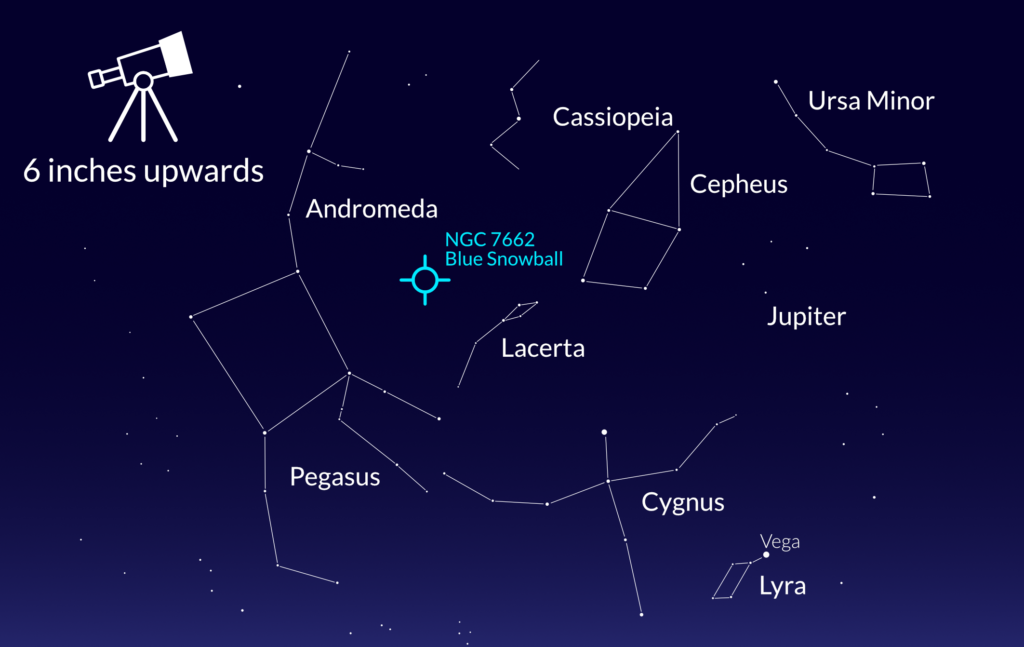

It is visible through binoculars in a dark sky but will only look like a star. Larger telescopes from 6 inches of aperture upwards will reveal its nebula-like appearance and appears to be blue or green in colour.
Map: Copyright © Michael Vlasov 2017, www.deepskywatch.com
Planetary nebulae are products of old stars that have entered a red giant phase and have begun to cast off its outer layers of gas. As the star’s dying core is still active through contraction, that causes a flow of energy that lights up the gases through a process of ionisation. It’s those gases in the form of emission nebulae we see depending on its distance from us and how bright it is.
